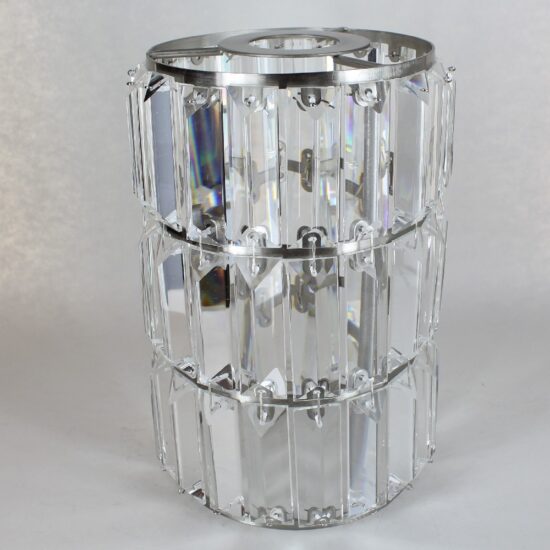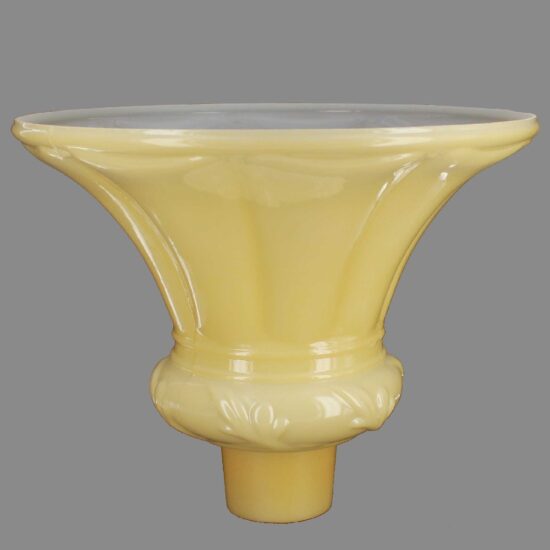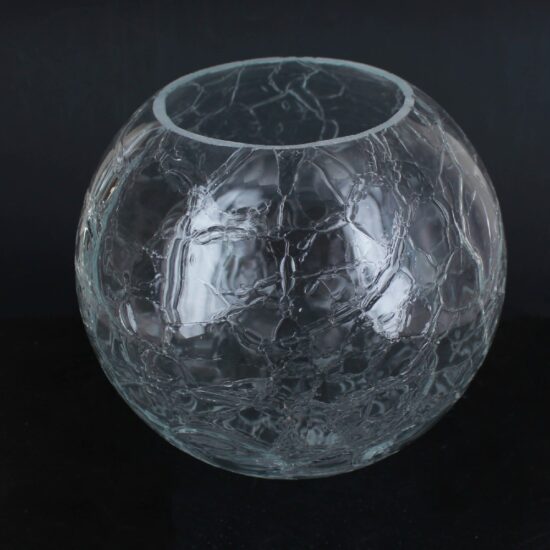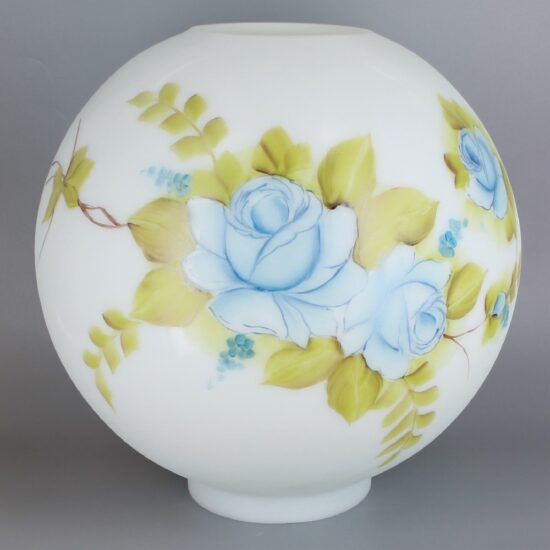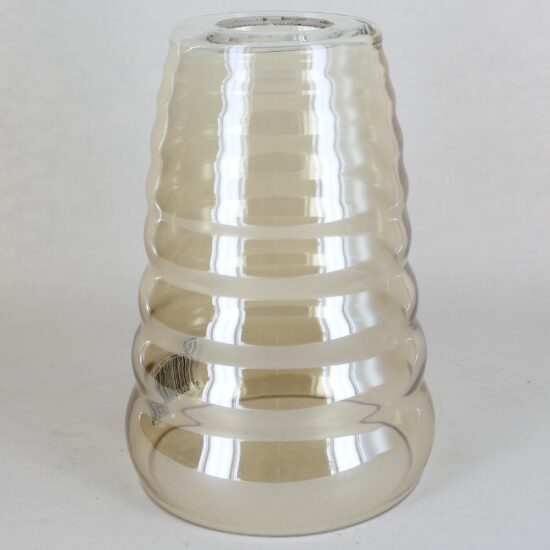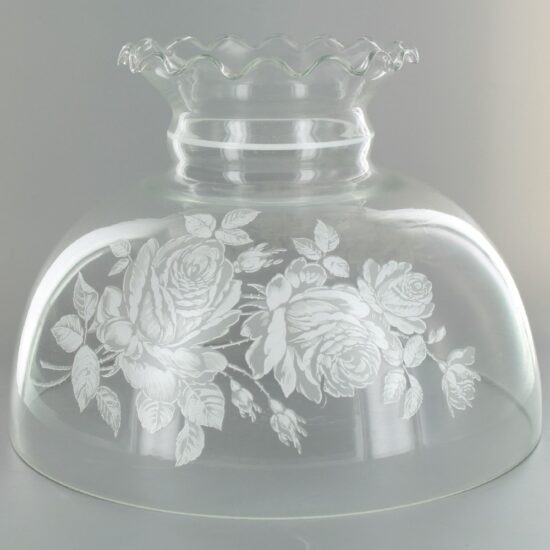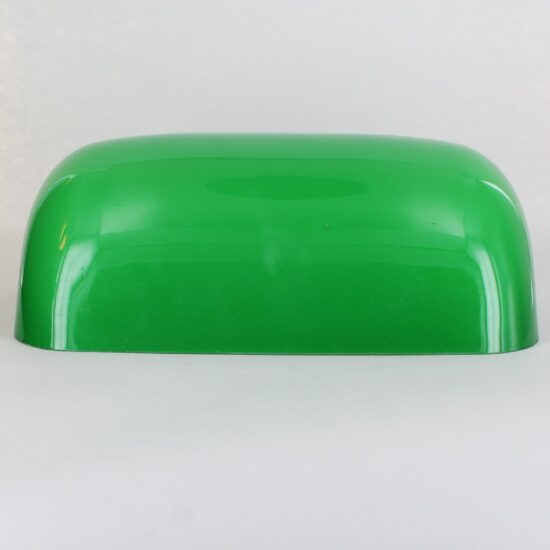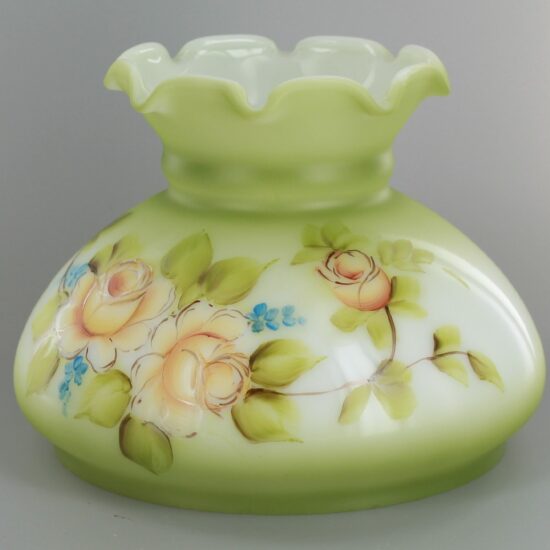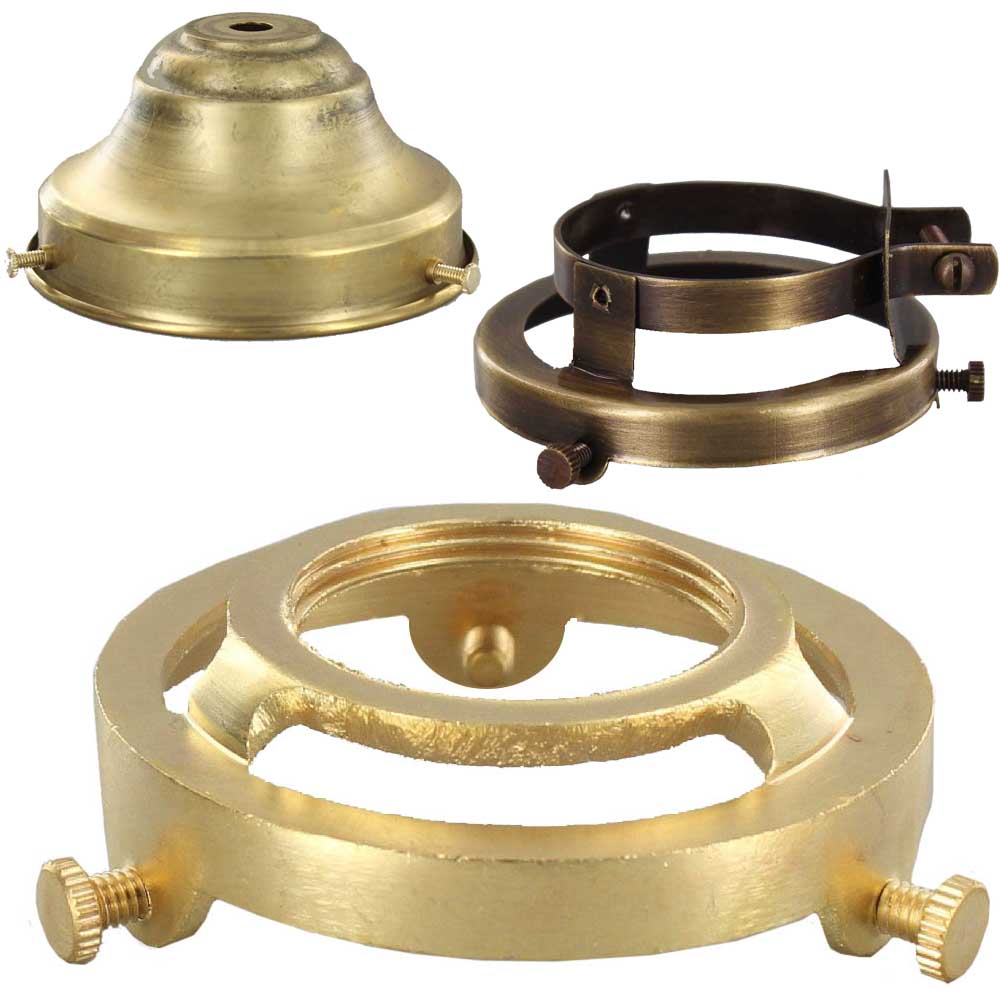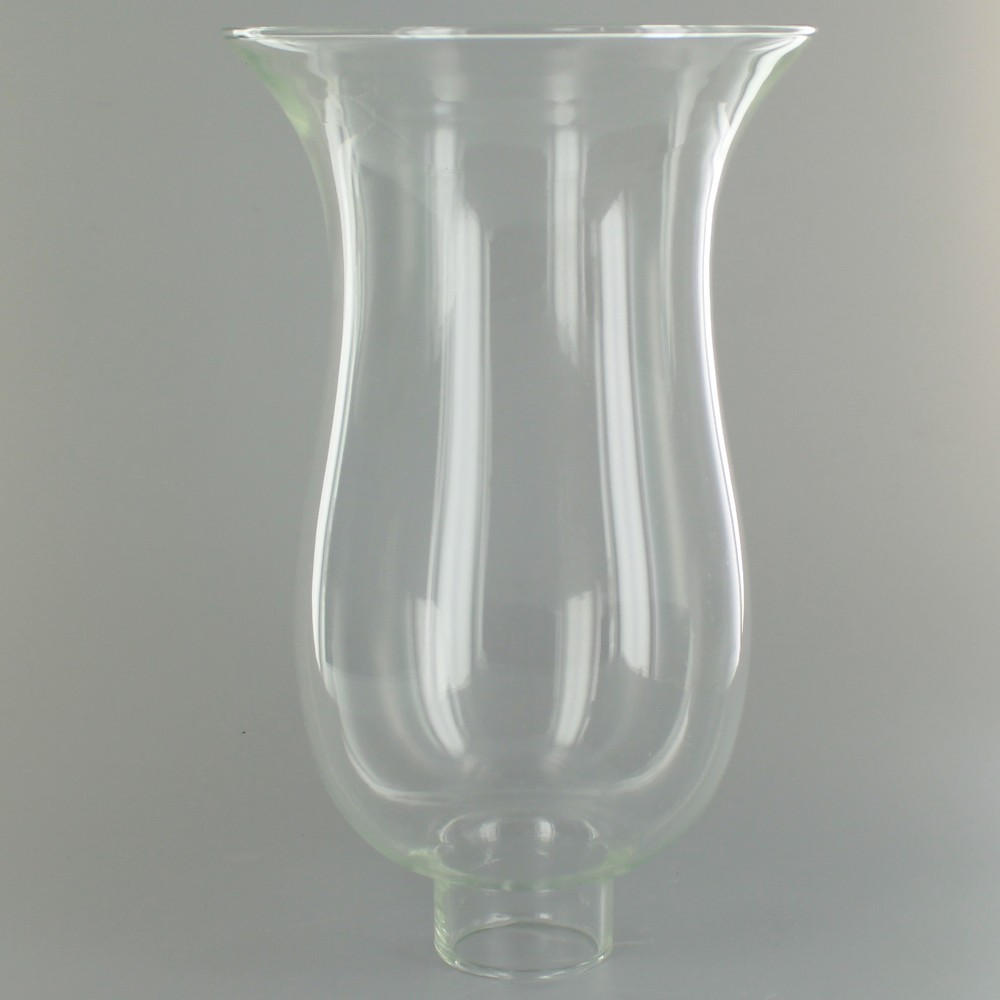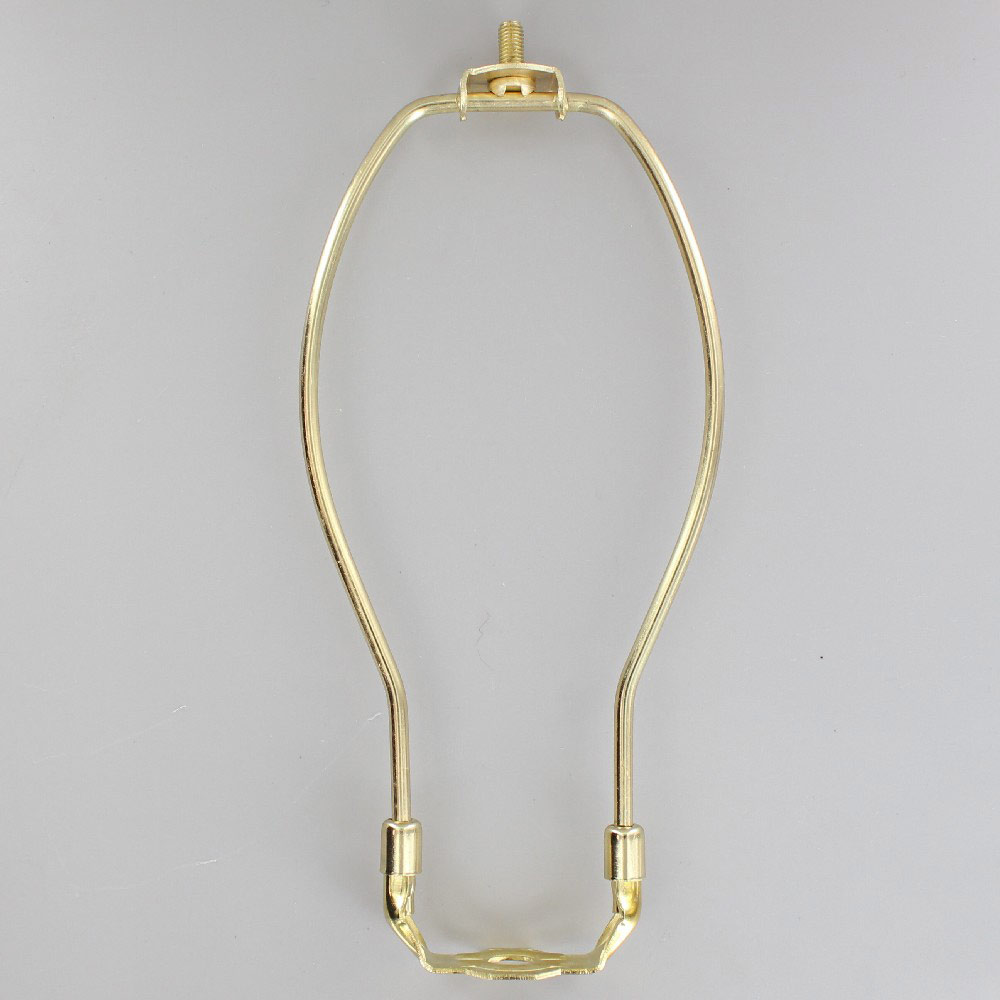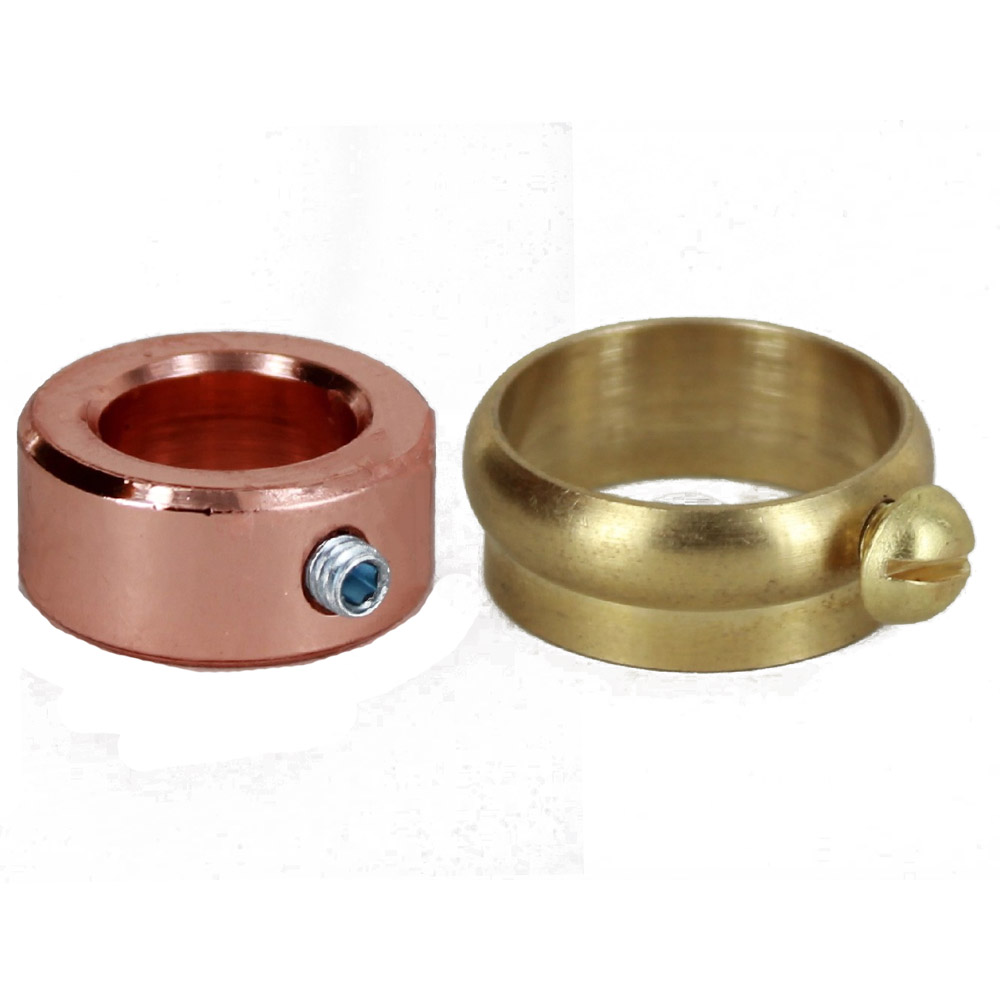Replacement lamp glass shades | Student Glass Shades | Torchiere Glass Shades | Bankers Shades | Glass lamp shades | Pendant Glass Shades
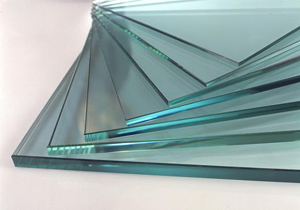
What is Glass?
According to the Getty’s Art and Architecture Thesaurus, glass is:
An amorphous, inorganic substance made by fusing silica (silicon dioxide) with a basic oxide; generally transparent but often translucent or opaque.
Its characteristic properties are its hardness and rigidity at ordinary temperatures, its capacity for plastic working at elevated temperatures, and its resistance to weathering and to most chemicals except hydrofluoric acid.
Used for both utilitarian and decorative purposes, it can be formed into various shapes, colored or decorated.
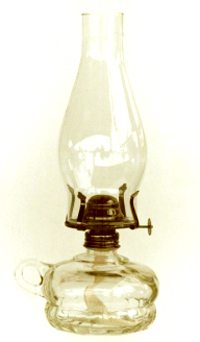
History of Lamp Glass
Light is important. It’s always been a focal point in homes for families throughout history. Light has gone from a simple fire to torches, and then to kerosene oil lamps. So many antique lamps were designed for aesthetics and durability, which is why people collect them to this day.
The first oil lamps of man made materials were found in the Egypt, Greece and Rome and are considered probably the first mass produced objects in history. They were made from terracotta, bronze, stone and alabaster, in a shape of a dish that would hold oil and a place for a wick that would prolong burning and prevented the whole surface of the oil to catch fire. They were easier and safer to carry than torches, they were reusable and left less residues
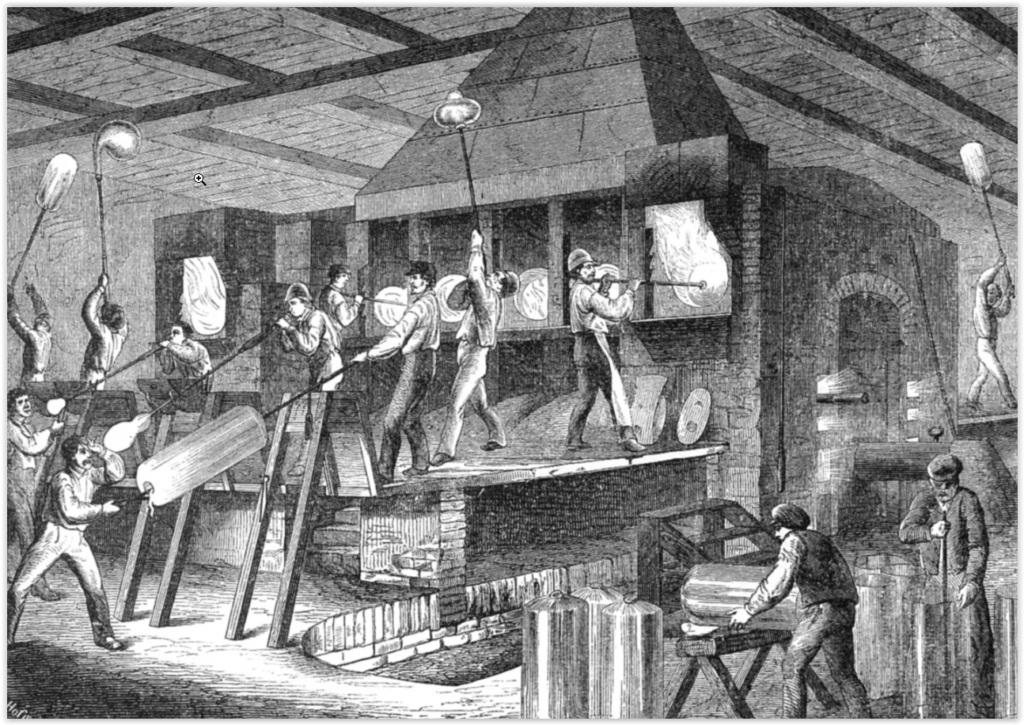
Little is known about the first attempts to make glass. However, it is generally believed that glass making was discovered 4,000 years ago, or more, in Mesopotamia. The Roman historian Pliny suggested that Phoenician merchants had made the first glass after thousands of years of using naturally-formed glass, humans finally discovered how to make it – probably by accident.

The Roman historian Pliny wrote in A.D. 77 that Phoenician sailors places “stones of soda ash” into a fire (presumably to rest their posts on) on a sandy beach. They later found a “hard smooth stone” in the ashes.
That’s one possible scenario, given that sand, soda ash (sodium carbonate) , and heat are all ingredients for making glass. Another possibility is that potters inadvertently let some sand drift into their kilns, where it stuck to the wet clay, accidentally creating a hard, smooth glaze on their pottery when the baking was done.
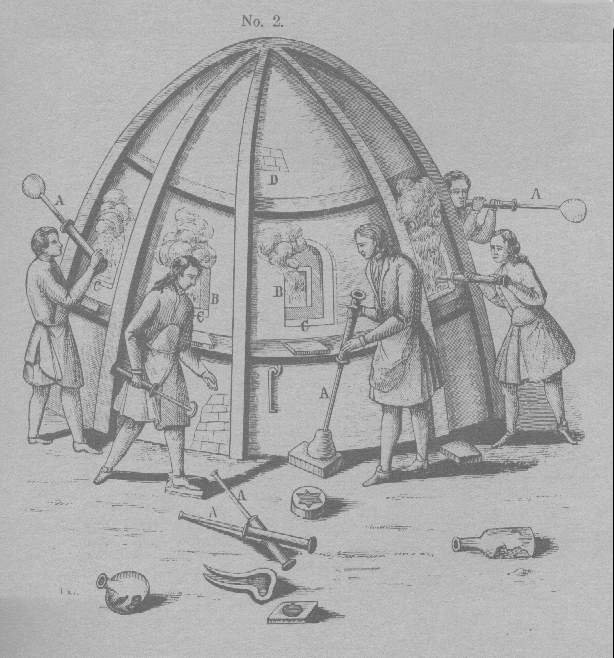
Glass melting furnaces were small and the heat they produced was hardly enough to melt glass. But in the 1st century BC, Syrian craftsmen invented the blow pipe.
With the discovery of clear glass (through the introduction of manganese dioxide), by glass blowers in Alexandria circa 100 AD, the Romans began to use glass for architectural purposes.
For the next 300 years, the glass industry was increased rapidly and then declined.
In Mesopotamia it was revived in the 700BC and in Egypt in the 500’s BC.
For the next 500 years, Egypt, Syria and the other countries along the eastern coast of the Mediterranean Sea were centers for glass manufacturing.
In the beginning it was very hard and slow to manufacture glass. Glass melting furnaces were small and the heat they produced was hardly enough to melt glass.
But in the 1st century BC, Syrian craftsmen invented the blow pipe. This revolutionary discovery made glass production easier, faster and cheaper.
Glass production flourished in the Roman Empire and spread from Italy to all countries under its rule.
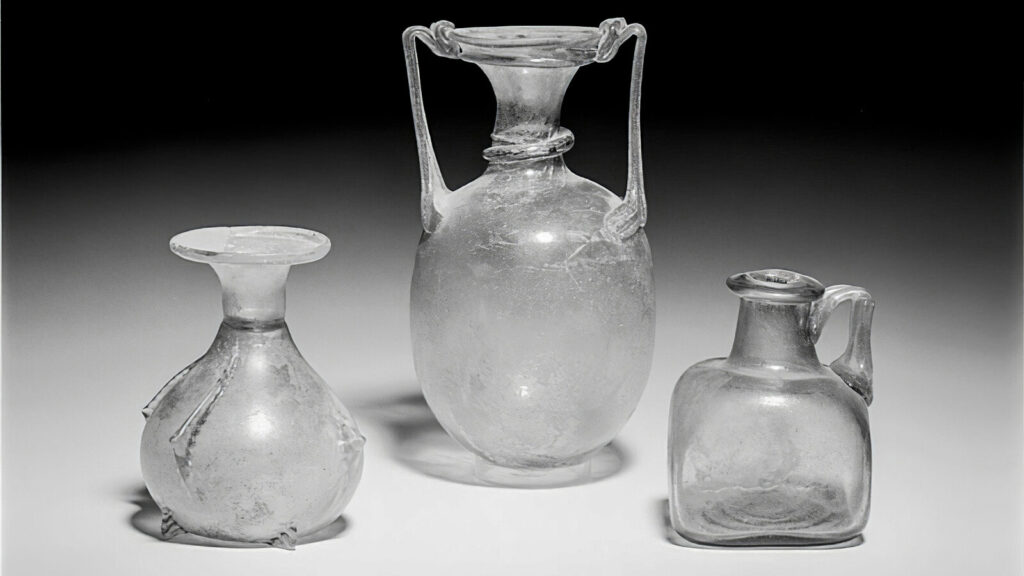
In 1000 AD the Egyptian city of Alexandria was the most important center of glass manufacture. Throughout Europe the miraculous art of making stained glass on churches and cathedrals across the continent reached its height in the finest Chatres and Conterbury cathedral windows produced in the 13th and 14th centuries.
1226 Broad sheet glass was first produced in Sussex, England. 1271 During the Middle Ages, Venice become a major center for glass production in Western Europe.
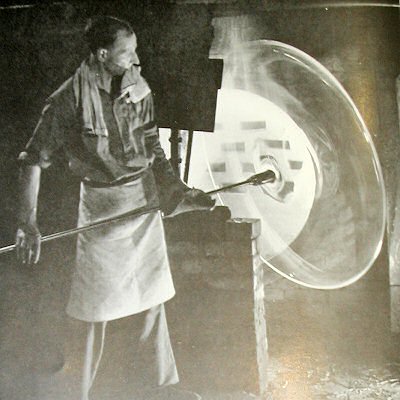
1330 French glass makers first produced crown glass in Rouen, France.
1590 Glass telescope and microscope lenses are developed for the first time in the Netherlands.
1608 Glass in America began at Jamestown, Virginia and almost 200 years passed before skilled glassworkers crossed the Allegheny Mountains and began production in Western Pennsylvania.
1620 Evidence of the use of the blown plate glass method dates back to 1620 in London and was used for mirrors and coach plates.
A very important advance in glass manufacture was the technique of adding lead oxide to the molten glass; this improved the appearance of the glass and made it easier to melt using sea-coal as a furnace fuel. This technique also increased the “working period” of the glass, making it easier to manipulate.

The process was first discovered by George Ravenscroft in 1674, who was the first to produce clear lead crystal glassware on an industrial scale. Ravenscroft had the cultural and financial resources necessary to revolutionize the glass trade, allowing England to overtake Venice as the center of the glass industry in the eighteenth and nineteenth centuries.
Seeking to find an alternative to Venetian cristallo, he used flint as a silica source, but his glasses tended to crizzle, developing a network of small cracks destroying its transparency. This was eventually overcome by replacing some of the potash flux with lead oxide to the melt.
He was granted a protective patent in 1673, where production and refinement moved from his glasshouse on the Savoy to the seclusion of Henley-on-Thames.
1678 Crown glass was first produced in London. Due to its superior quality it dominated manufacturing until the 19th century.
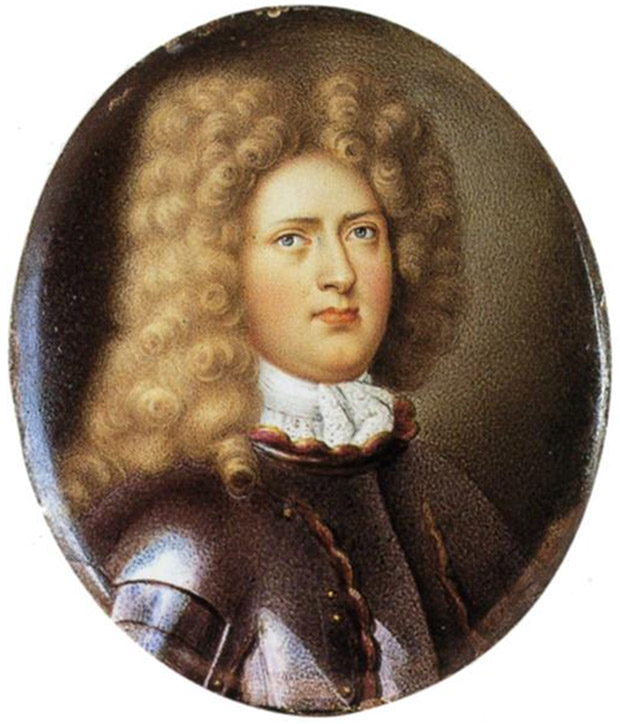
1688 Polished plate glass was first produced in France, by Louis Lucas de Nehou and A. Thevart. The glass was cast and then hand polished.
Prior to this invention, mirror plates, made from blown “sheet” glass, had been limited in size. De Nehou’s process of rolling molten glass poured on an iron table rendered the manufacture of very large plates possible.
The polishing process was industrialized around 1800 with the adoption of a steam engine to carry out the grinding and polishing of the cast glass.
By 1696, after the patent expired, twenty-seven glasshouses in England were producing flint glass and were exporting all over Europe with such success that, in 1746, the British Government imposed a lucrative tax on it.
Rather than drastically reduce the lead content of their glass, manufacturers responded by creating highly decorated, smaller, more delicate forms, often with hollow stems, known to collectors today as Excise glasses. The British glass making industry was able to take off with the repeal of the tax in 1845.
From 1750 to 1900 is the period of great glass making of certain kinds, the hand production of window glass and bottles and the gradual take over of mechanical methods, first for bottles, then for window glass.
After the Civil War to the turn of the century was perhaps the greatest period of hand production of glass, yet by the end of World War I, all hand blowers of glass bottles and virtually all window glass blowers were unemployed because of machine development.
1773 The English began polished plate glass production at Ravenshead.
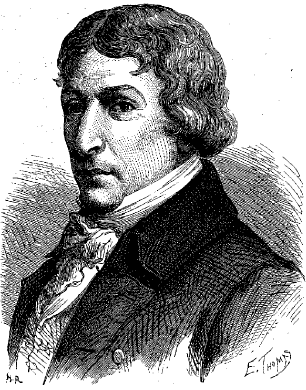
In 1781, a Swiss chemist, Aime Argand, introduced the first successful oil lamp. The primary key to his success a metallic wick holder that allowed far more air to reach the flame producing a far brighter and clearer light. The addition of a glass chimney increased the air flow while sheltering the flame from drafts. The result was lamp that produced seven to ten times as much light as a candle with far less smoke
In 1797, the region’s first two glasshouses opened, the conical furnace stacks of glass factories have been a defining feature of the region’s skyline. Scores of glasshouses followed, producing rivers of glass for an abundant variety of uses around the nation and eventually around the world. By the Civil War, the Pittsburgh region reigned as the center of the nation’s glass industry.
By 1800 a steam engine was used to carry out the grinding and polishing process. 1800s Synthetic chemicals become available for the first time as the industrial revolution brings a new era in glass manufacturing.
Since those times, people used other materials for a body of the lamp – terracotta, marble and metal and instead of fat, oil was used (fish and olive oil). Wick was also often added to prolong burning of the flame and to focus it. Oil lamps were the most widespread method of illumination until the end of the 18th century.
Cast glass windows, albeit with poor optical qualities, began to appear in the most important buildings in Rome and the most luxurious villas of Herculaneum and Pompeii. Over the next 1,000 years, glass making and working continued and spread through southern Europe and beyond.
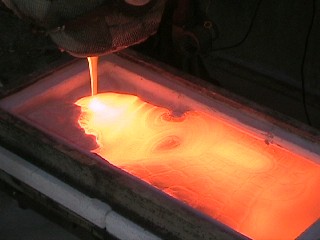
By the early 1900s most glass was manufactured using the sheet glass method—through which a ribbon of glass was drawn from a tank furnace between cooled rollers. It produced a less expensive, albeit imperfect window.
1903 An automatic glass blowing machine was invented by Michael Owens
1913 Technique of “Flat Drawn Sheet“ was introduced in Belgium
1950-1960 Glass science became a major research discipline. Major glass research center was established by Ford Motor Co
1959 “Float glass” was invented in UK by Sir Akistair Pilkington
1984 First fluoride glass was discovered by Marcel and Michael Poulain and Jacques Lucas in Rennes, France.
Glossary of Lamp Glass Terms
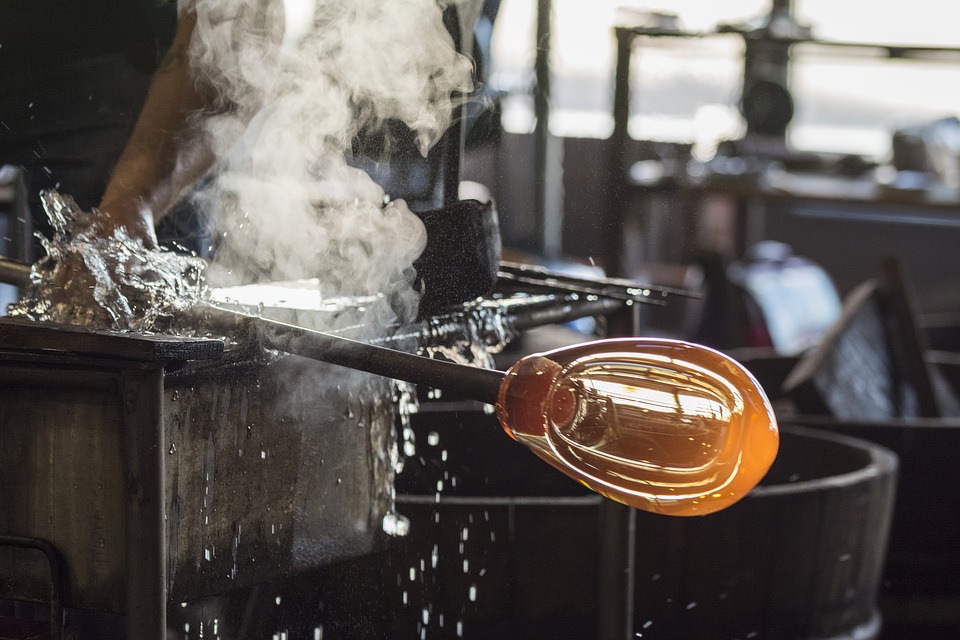
Blown Glass
Glass that is made on a blowpipe, formed and shaped by hand. Glassblowing is a glassforming technique that involves inflating molten glass into a bubble (or parison), with the aid of a blowpipe (or blow tube).
A person who blows glass is called a glassblower, glassmith, or gaffer.
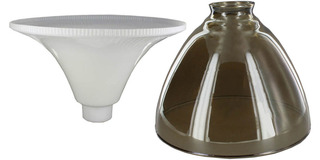
A glass “bowl” which forces the light upwards providing bright, indirect lighting to illuminate a room.
Diffusers are also called the I.E.S. reflectors because of the development of Illuminating Engineering Society (I.E.S.) standards which encouraged better lighting in America through higher wattage output and the development of the 3-way bulb.
Many people think that the diffuser IS a shade in itself and look for one that is fancy or colored. This is not the case. A diffuser is simply a glass bowl that is made to diffuse the light upwards. A fabric shade then sits on top for aesthetics and to soften the glare from the bright bulbs.
Floor lamps with a 3 candelabra sockets around the diffuser are the most common and popular type of lamps that take a diffuser. Diffuser lamps are still very popular today because of the great light they provide. They take large “Mogul” bulbs in the center which are very high wattage and therefore, are a powerful light source without being harsh.
FITTER
The first thing you must consider when replacing a glass lampshade is the proper “fitter” size of the shade holder on your lamp or fixture.
The shade holder is the part (usually metal) that holds the shade to the lamp or fixture.
The fitter is the portion of the shade holder through which the glass lampshade actually passes and makes physical contact with the lamp.

Shade holders come in different fitter sizes and so do glass lampshades.
The idea, logically, is to match the same fitter size for both the shade holder and shade.
To determine the correct size glass shade, simply measure the inner diameter of the shade holder (fitter) on your fixture.
Common diameters for Glass shade fitters are: 2-1/4in, 3-1/4in, 4in, 6in, 10in and 12in.
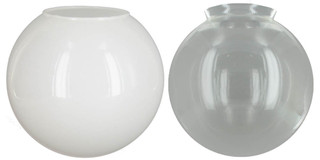
A term often used to describe a lamp shade, particularly a ball shade. Also, to describe the lamp glass used in a lantern.
The term hurricane lamp is somewhat misleading. “Hurricane” is the name for a tall cylindrical or barrel-shaped glass dome placed around a candlestick to protect the flame from drafts. A hurricane shade is a similar protective device attached to a wall candle bracket or candleholder.

Illuminating Engineering Society (IES)
A non-profit learned society that was founded in New York City on January 10, 1906. The IES’s stated mission is to improve the lighted environment by bringing together those with lighting knowledge and by translating that knowledge into actions that benefit the public. Members of the IES are regarded as professionals in their industry and are globally respected for their knowledge. The Society is still headquartered in New York City, with offices at 120 Wall Street.
A lamp harp is the component of a lamp to which the lamp shade is attached. It typically comes in two separate parts, a saddle which is fastened under the lamp socket, and the harp itself which consist of a lightweight frame attached to the saddle at its lower end and extending upwards to a point above the bulb.

A fixture that covers the lightbulb on a lamp to diffuse the light it emits. Conical, cylindrical and other forms on floor-, desk- or table top-mounted as well as suspended lamp models are the most common and are made in a wide range of materials. The term can also apply to the glass hung under many designs of ceiling lamp. Beyond its practical purpose, significant emphasis is also usually given to decorative and aesthetic features.
A lamp shade also serves to “shade” human eyes from the direct glare of the light bulbs used to illuminate the lamp. Some lamp shades are also lined with a hard-backed opaque lining, often white or gold, to reflect as much light as possible through the top and bottom of the shade while blocking light from emitting through the walls of the shade itself.
In other cases, the shade material is deliberately decorative so that upon illumination it may greater emphasize a display of color and light emitting through the shade surface itself.
A “fitter” describes how the lampshade connects to the lamp base. The most common lampshade fitter is a Spider fitter. Spider fitters are set on top of a lamp harp, and secured with a finial.
The harp is typically seated below the socket and two arms rise up around the light bulb and join at the top, where it provides resting support for the spider fitter itself.
The fitter is built into the lamp shade frame itself and sits on top of the harp. Other fitters include clip-on (for either regular bulbs or candelabra bulbs), Uno fitters which are attached to the lamp itself below the light bulb, and notched-bowl fitters which support the use of a glass reflector bowl.
HOLDERS – GLASS SHADE HOLDERS – NECKLESS HOLDERS – FITTERS
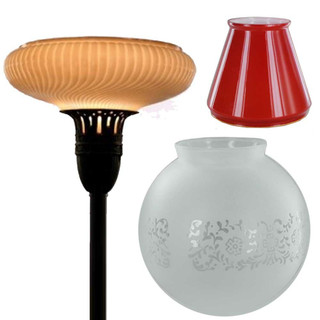
Replacement glass lampshade selection should always begin with a consideration of your lamp’s shade holder fitter type, then fitter size. Fortunately, our online catalog lists the correct fitter size for all of our glass lampshades and can serve as a handy reference.
Though there are a myriad of sizes and designs of glass lampshades and lampshade holders, when it comes to choosing a replacement shade you needn’t be intimidated. Just remember to match your lamp’s shade holder size (style & fitter) to the correct lampshade fitter size.
If your lamp requires a shade with an unusual fitter size, or maybe you have an early antique or heirloom lamp that requires additional considerations in choosing an appropriate replacement lampshade such as correct style and period, please use our online catalog. Let us assist you in making a good decision on replacement glass for your lamp or fixture.
Glass Lamps and light fixtures can be fitted with many functional and decorative items that are made of glass. Though some of these pieces are used within the body of a lamp, the primary purpose of any glass on a fixture is as a lamp shade to soften and diffuse light. This is necessary because light from a bulb is often too intense for the human eye. It also casts an artificial, unkind glare over everything in the immediate area.
Light from a bulb that has passed through glass lamp shades, however, tend to soften and pick up the warm hues that are associated with natural sunlight. Such radiance is also more flattering to people and furniture than that which would otherwise be emitted by an un-covered electric light bulb.
To help electric lights shine in such a comfortable and appealing manner, Grand Brass Lamp Parts offer a wide variety of glass lamp shades including glass globes, dishes, diffusers, and reflectors.
Grand Brass Lamp Parts also offers a wide variety of glass lamp shade styles.

Lantern
A lighting device, commonly used outdoors, that utilizes a globe to protect the flame from wind and the elements. Most often carried from place to place, thus of fairly rugged construction.
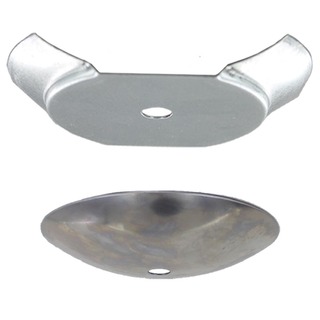
A Neckless Style Glass Fitter is meant to hang a Glass Ball Shade with No-Neck.
The neckless holder has an Inside plate and an Outside cover.

The neckless ball shade hangs on the inside plate. A neckless glass ball shade should only be used in a Vertical Orientation since Gravity is allowing the ball to rest in place.
The outside cover clamps the ball in place. A mechanism must be used to allow the cover to slide away(unclamp the ball shade) and allow the Ball Shade to be lifted and tilted and removed to facilitate bulb replacement.
Commonly a Slip Ring is Used to Hold the Cover Down. Another Variation Involves a special fitting and a nut and Bushing to hold it clamped in place.
Please Watch Our Video Below for an Example of a Neckless Ball Fixture being Assembled.

TORCHIERE FLOOR LAMPS
Another holder type and fitter size, outside the realm of those listed above, is for torchiere floor lamps. Almost all torchiere lamps have a 2-3/4” fitter size, bugle-shaped shade holder.

Replacement glass lampshade selection should always begin with a consideration of your lamp’s shade holder fitter type, then fitter size. Fortunately, our online catalog lists the correct fitter size for all of our glass lampshades and can serve as a handy reference.
Grand Brass Lamp Parts, LLC has served the Retail and Wholesale lamp parts, lighting parts, and chandelier parts industry since 1913 and also stocks lamp cord sets, including SPT and SVT sets as well as Twisted Fabric Covered Lamp Wire Power Cords.
Plus, to complement our electrical wire and lamp cord supplies, we also stock canopies and other lighting parts to cover all your lighting parts shopping needs.
You may also want to view our range of Lamp Sockets , Lamp dimmers, and lamp switches to help complete the job.

